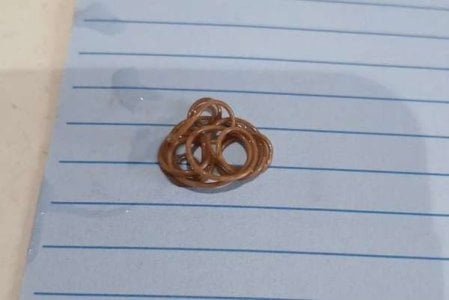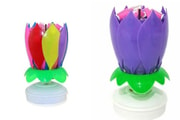Local shares unsettling, gruesome find in her bathroom. Is it a threat to your home?
By
Danielle F.
- Replies 2
Australians are no strangers to the odd creepy-crawly animals making an unwelcome appearance in their homes.
However, a woman's discovery in her bathroom last week was more akin to a scene from a horror flick than an average intrusion.
In the quiet of her home in Victoria, a woman stumbled upon a peculiar sight next to her bathtub.
She saw a long, brown 'string', curling and twisting without any discernible head or tail.
The curled string was spotted next to a deceased huntsman spider.
However, after seeking advice from local field naturalists online, the woman learned of the extraordinary and macabre connection between the two insects.
The 'string' was a parasitic worm, and the spider was its unfortunate host.
Dr Kayvan Etebari, an expert in the field, explained the chilling lifecycle of these parasites.
The brown string was actually a mermithid nematode or a horsehair worm.
The worm infiltrates the bodies of their hosts, such as insects and spiders, and consumes them from the inside out.
The host remains alive for most of the parasite's development, providing sustenance until the worm emerges.
The horsehair worms are commonly found after rainfall or in damp areas.
The revelation that these parasites manipulate their hosts' behaviour is reminiscent of the cordyceps fungus.
Like cordyceps, these worms drive their hosts to seek out water since it's vital for the worm's emergence and survival.
This behavioural manipulation could ensure that the worm could exit the host in a suitable habitat.
Despite their unsettling nature, these parasites should not be a threat to humans or pets.
They are also harmless to birds and reptiles.
Dr Etebari advised that the worm can be safely removed with a tissue or gloves and placed outside in a damp, shaded area.
They cannot reproduce indoors and should not infest homes.
While their presence may be disconcerting, it's a rare opportunity to witness an incredible ecological phenomenon.
Scientists have been researching the power of similar microscopic nematodes as an eco-friendly pest management solution.
These worms target and infect soil pests, releasing bacteria that kill the insect and allow the nematodes to reproduce, thus providing a natural method of pest control.
So, while we may not enjoy the company of these parasitic worms, their existence and the role they play in nature's cycle is nothing short of remarkable.

Have you ever encountered such a bizarre find in your home? Have you encountered other interesting creatures lurking in your home? Share your stories with us in the comments section below!
However, a woman's discovery in her bathroom last week was more akin to a scene from a horror flick than an average intrusion.
In the quiet of her home in Victoria, a woman stumbled upon a peculiar sight next to her bathtub.
She saw a long, brown 'string', curling and twisting without any discernible head or tail.
The curled string was spotted next to a deceased huntsman spider.
However, after seeking advice from local field naturalists online, the woman learned of the extraordinary and macabre connection between the two insects.
The 'string' was a parasitic worm, and the spider was its unfortunate host.
Dr Kayvan Etebari, an expert in the field, explained the chilling lifecycle of these parasites.
The brown string was actually a mermithid nematode or a horsehair worm.
The worm infiltrates the bodies of their hosts, such as insects and spiders, and consumes them from the inside out.
The host remains alive for most of the parasite's development, providing sustenance until the worm emerges.
The horsehair worms are commonly found after rainfall or in damp areas.
The revelation that these parasites manipulate their hosts' behaviour is reminiscent of the cordyceps fungus.
Like cordyceps, these worms drive their hosts to seek out water since it's vital for the worm's emergence and survival.
This behavioural manipulation could ensure that the worm could exit the host in a suitable habitat.
Despite their unsettling nature, these parasites should not be a threat to humans or pets.
They are also harmless to birds and reptiles.
Dr Etebari advised that the worm can be safely removed with a tissue or gloves and placed outside in a damp, shaded area.
They cannot reproduce indoors and should not infest homes.
While their presence may be disconcerting, it's a rare opportunity to witness an incredible ecological phenomenon.
Scientists have been researching the power of similar microscopic nematodes as an eco-friendly pest management solution.
These worms target and infect soil pests, releasing bacteria that kill the insect and allow the nematodes to reproduce, thus providing a natural method of pest control.
So, while we may not enjoy the company of these parasitic worms, their existence and the role they play in nature's cycle is nothing short of remarkable.
Key Takeaways
- A woman discovered a peculiar, long, brown, string-like creature that was moving alongside a dead huntsman spider.
- It was revealed that this creature was a parasite that had infected its host and consumed it from the inside out as part of its lifecycle.
- Dr Etebari explained that the horsehair worm manipulates the behaviour of the infected host to continue its life cycle.
- The parasitic worms, however, are not harmful to humans or pets and can be relocated in a damp area.








